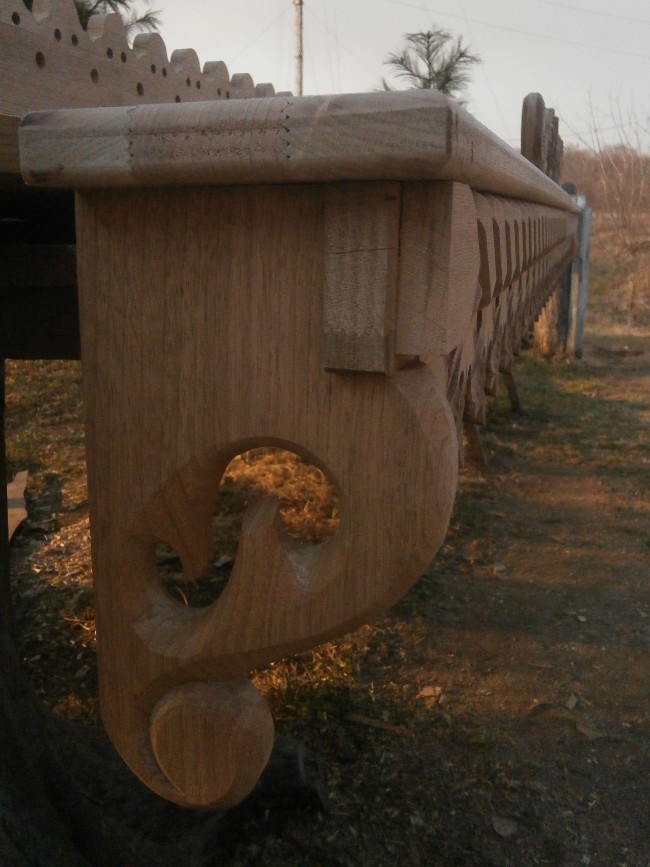Different wine glasses should be used for each type of wine. This is necessary in order to better reveal the taste and aroma of the drink. Professional sommeliers know that wine glasses come in many shapes and sizes, and are made from different materials. For tasting white and red varieties, different kits are used.
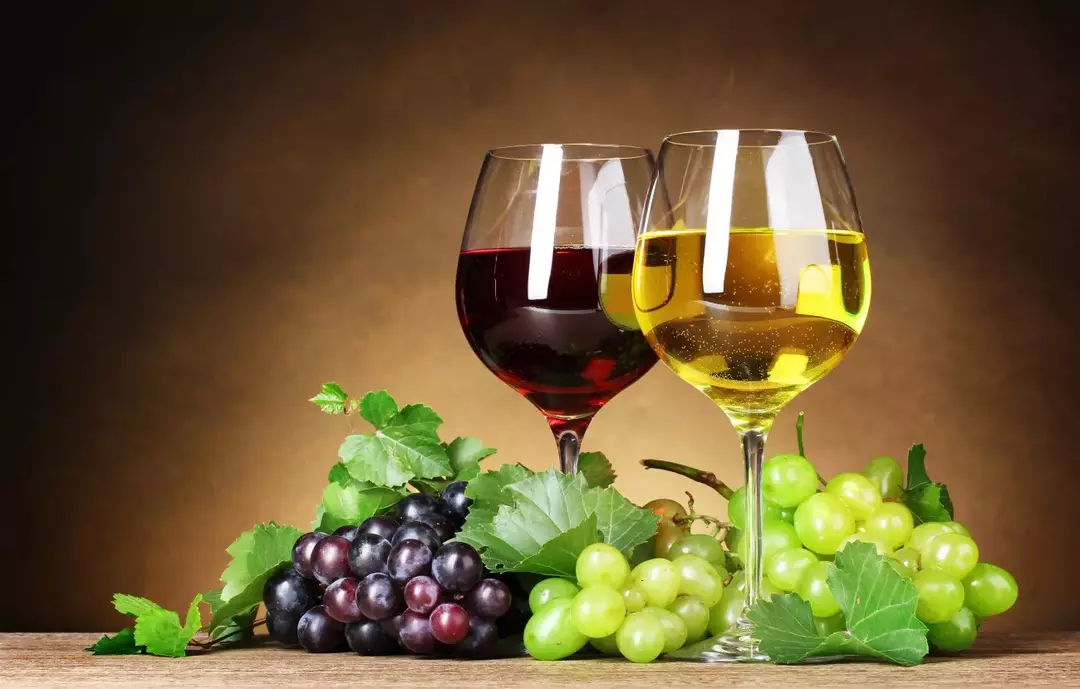
No holiday or romantic dinner is complete without a drink like wine.
Content
- 1 How did wine glasses come about?
- 2 What should be wine glasses
- 3 Classification of wine glasses for different types of wines
- 3.1 For red varieties
- 3.2 For white
- 3.3 Pink
- 3.4 Varieties for sparkling wines
- 3.5 Types of glasses for noble sweet
- 3.6 Types of vessels for sherry and port wine
- 4 Features of the shape of glasses
- 5 Dimensions and weight
- 6 What materials are wine glasses made from?
- 7 What is the difference between white and red wine glasses
- 8 How does the shape of the glass affect the taste and smell of wine
- 9 How to choose the right wine glasses
- 10 Subtleties of drinking wine
- 11 Care and washing of wine glasses
- 12 The best wine glass manufacturers
- 13 VIDEO: Master class - the culture of wine consumption.
How did wine glasses come about?
The Austrian glazier Klaus Riedel was the first to classify wine glasses. In the 1950s, he made a discovery. A glass manufacturer has discovered that the drink changes its taste depending on which container it is poured into.
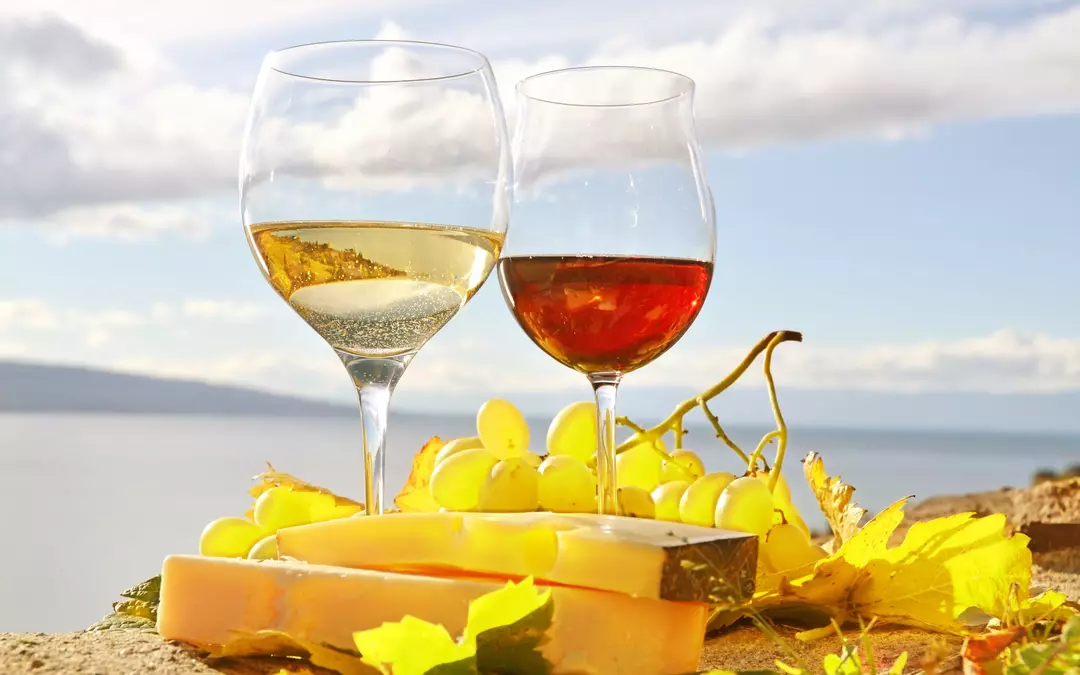
For many centuries, grape drink has been considered the most popular among alcoholic drinks.
Riedel's discovery was not immediately appreciated. For several decades, people continued to drink wine from different containers, including ordinary mugs. But at the end of the 20th century, the concept changed. The set created by the Austrian glazier is still considered a standard.

Like any other noble sort of alcohol, wine requires a special serving.
What should be wine glasses
The right wine glass should meet several points. Ideally, the crystal glass (or other material used) should be transparent, since the acquaintance with the drink begins with color.
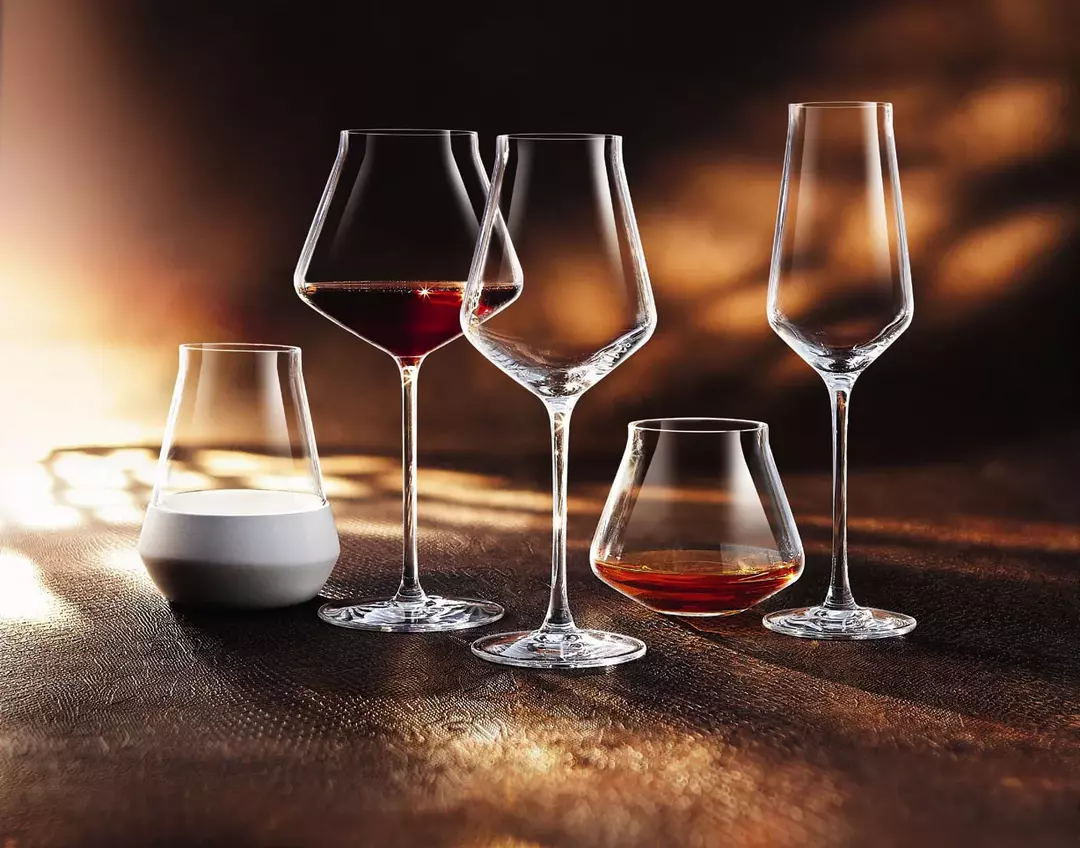
Wine glasses differ from each other not so much in shape as in the varieties of the drink.
The walls should not have thickenings or irregularities - only perfectly machined edges. Otherwise, the taste may not be fully revealed. The walls should be evenly thin. There can be no thickening on the rim.
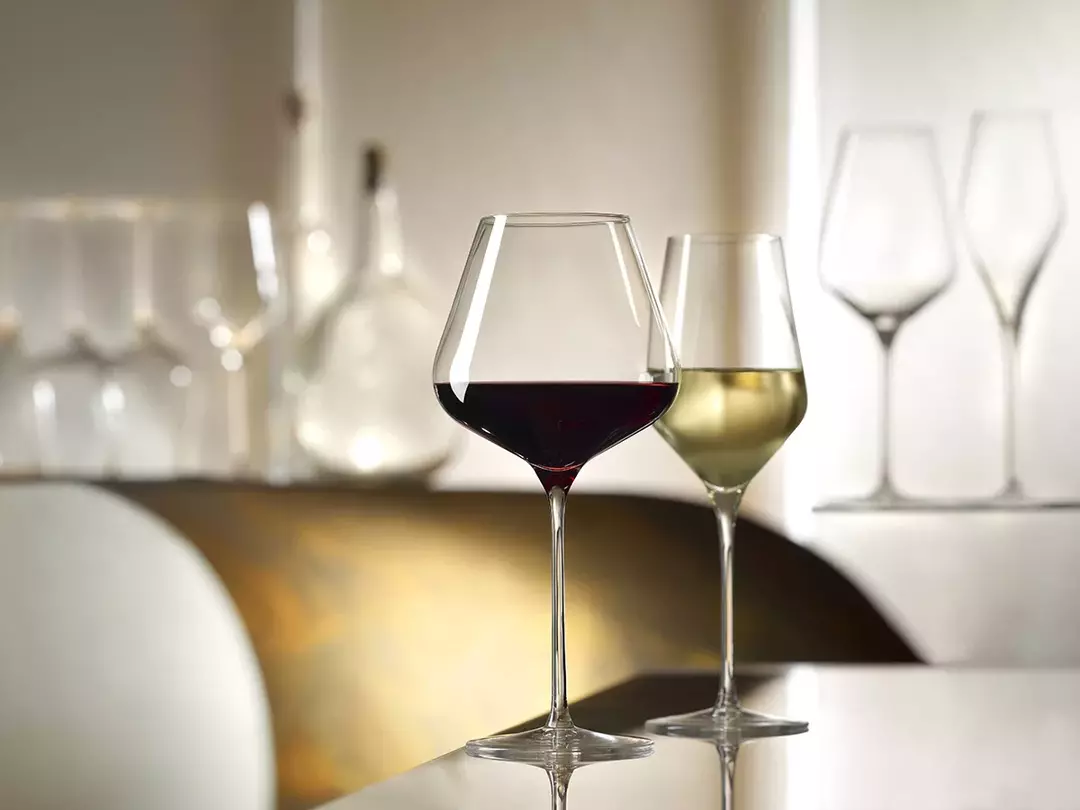
Depending on the drink, the container from which it will be drunk in the future is also selected.
Classification of wine glasses for different types of wines
To choose the right dishes, you need to consider what kind of wine they will pour. The classification provides for the use of different glasses for red, white wine, as well as for champagne or port wine. Each of these drinks requires the use of different vessel shapes. The most common are the following:
- tulip;
- ball;
- lyre.

In addition to the distinctive features of the variety, the glasses differ in size.
For red varieties
For tasting these varieties, it is necessary to choose wine glasses in the shape of a tulip. The fact is that the drink has a rich tart taste and smell, which cannot be said about white varieties. But aromatic substances evaporate quickly enough, which leads to the fact that the wine "exhales".
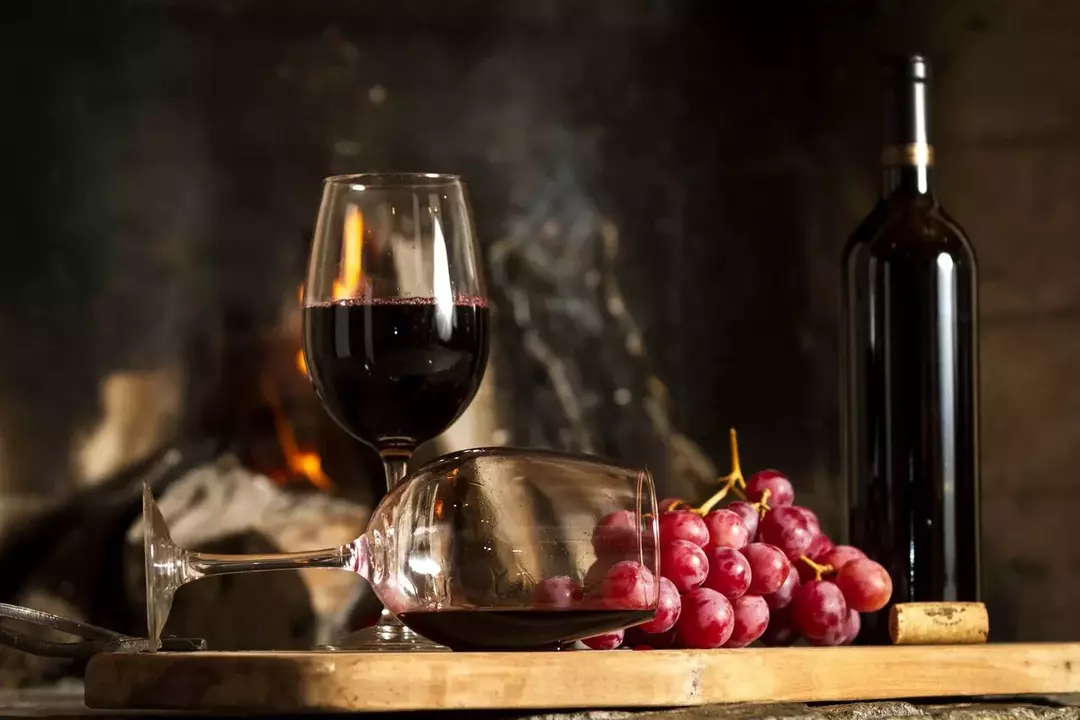
To serve red wine, massive vessels on a high leg are used.
The use of barrel-shaped utensils helps to preserve the aroma and taste. The tapered neck keeps them close to the edge, preventing them from escaping quickly, so you can taste all the fruity notes.
Note! The richer the taste, the larger should be the volume of the vessel. In some cases, the use of containers up to 500 ml is allowed.
For white
White varieties are characterized by less intensity of aroma and fruity notes. Therefore, wine glasses with a long stem and a small volume are suitable for them. Such dishes help keep the temperature of the drink that is served chilled. The leg does not allow the bottom to heat up by hand.
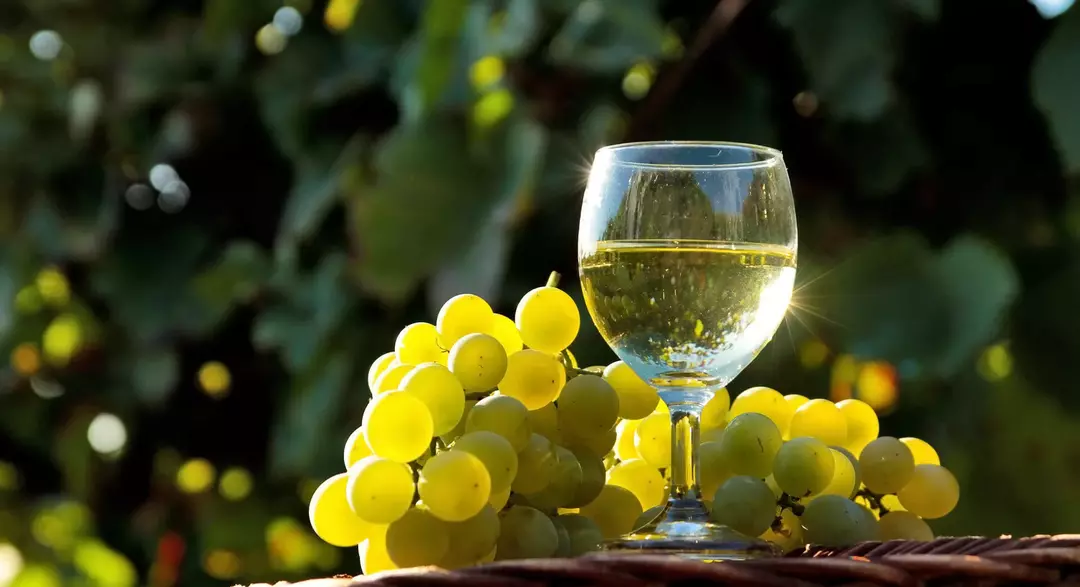
In some cases, you can serve the drink in a smaller copy of a Bordeaux glass.
The bowl is in most cases elongated. If we are talking about young wine, then choose small vessels. Premium varieties are served in larger containers.
Pink
Rose wine glasses are dishes with wide edges and a voluminous bowl. The special shape helps to saturate the drink with oxygen. And during the tasting, the liquid goes directly to the tip of the tongue, which allows you to feel all the fruity notes and sweetness.
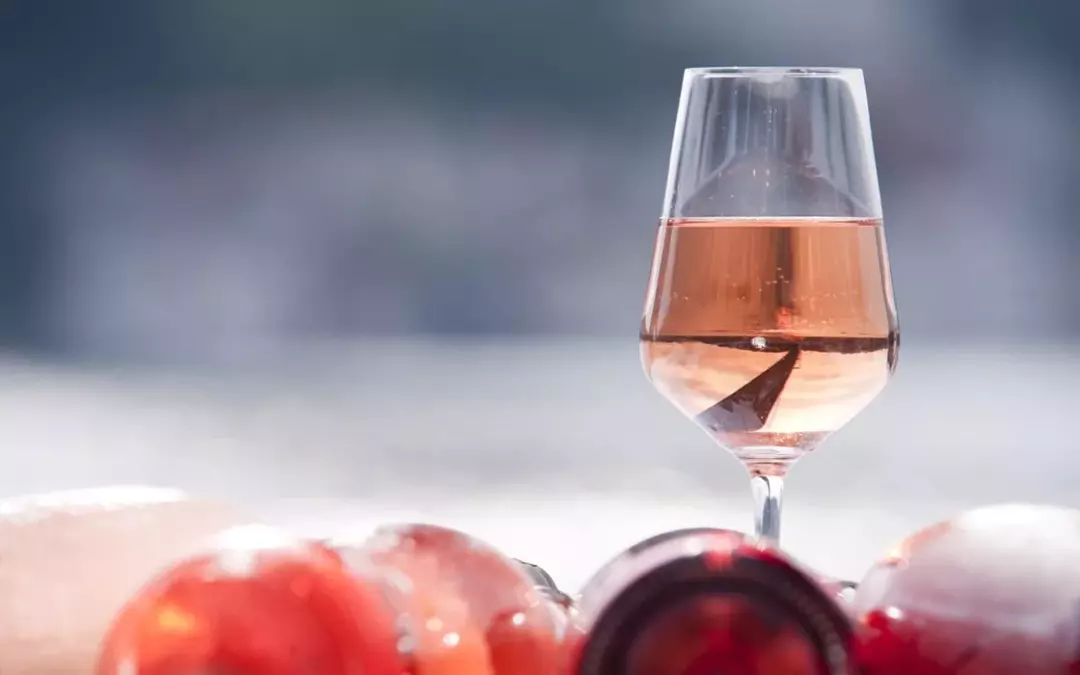
For varieties of rosé wine, it is customary to use special vessels - Flute.
However, sometimes classic containers are used for serving, which are designed for white varieties.
Varieties for sparkling wines
To serve these varieties of drinks, glasses with a high thin leg are used. They keep a low temperature, protect from the heat of the hands. In most cases, champagne is poured in the form of wine glasses called "flute". On a narrow leg there is an elongated bowl, which provides the formation of a small amount of foam. This affects the "sparklingness".
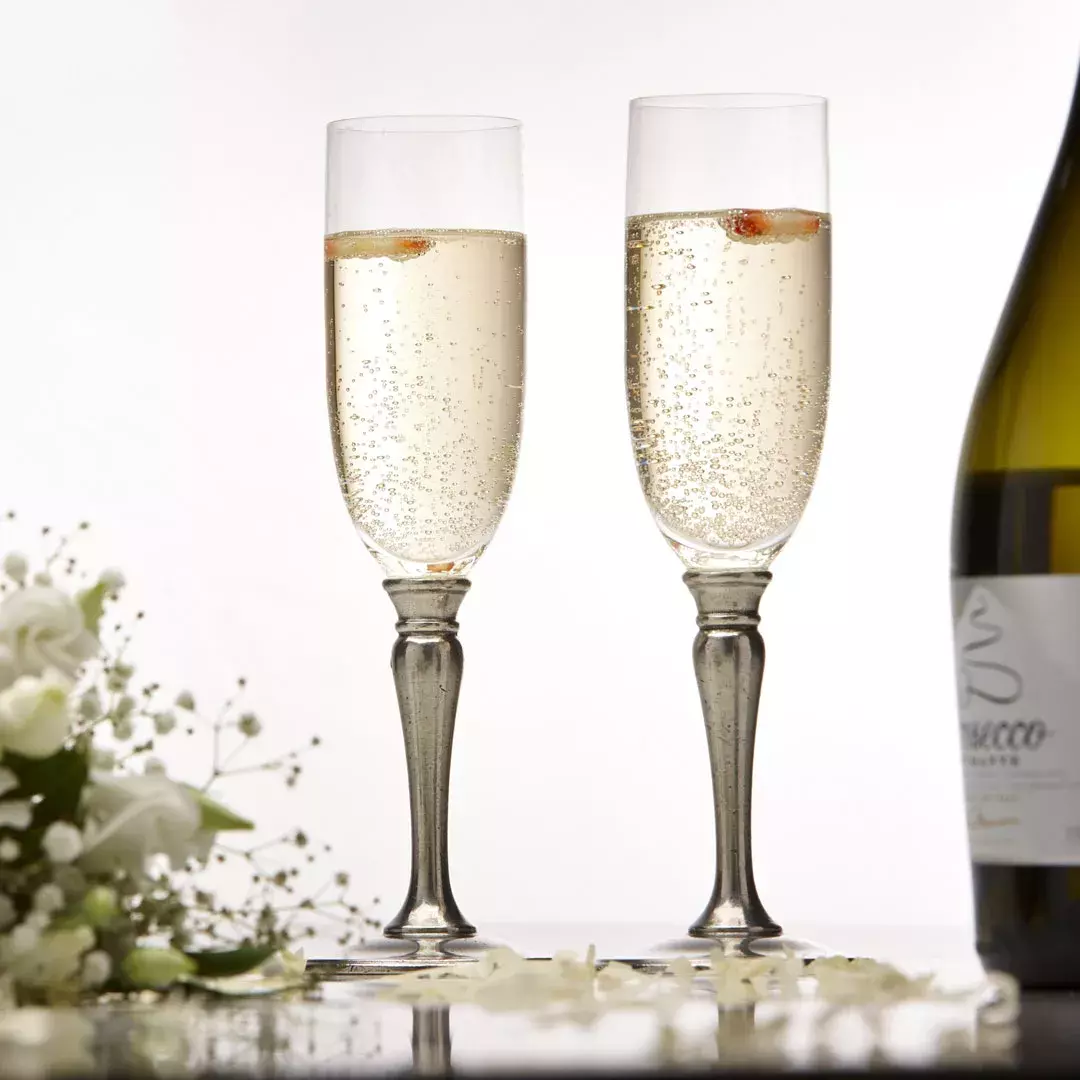
Wine glasses are used for sparkling varieties.
Note! Professional sommeliers believe that there is a difference in whether champagne is served in a narrow or wide bowl. And often they use just low, but voluminous bowls. They are commonly used to create sparkling wine fountains.
Types of glasses for noble sweet
The next type of vessels is intended for fragrant sweet drinks. This is Madeira or the famous "ice" wine, which is served to the table after the main meal. For these varieties, it is necessary to choose dishes of small volume (maximum 80 ml), the bowl of which is low and with straight walls.
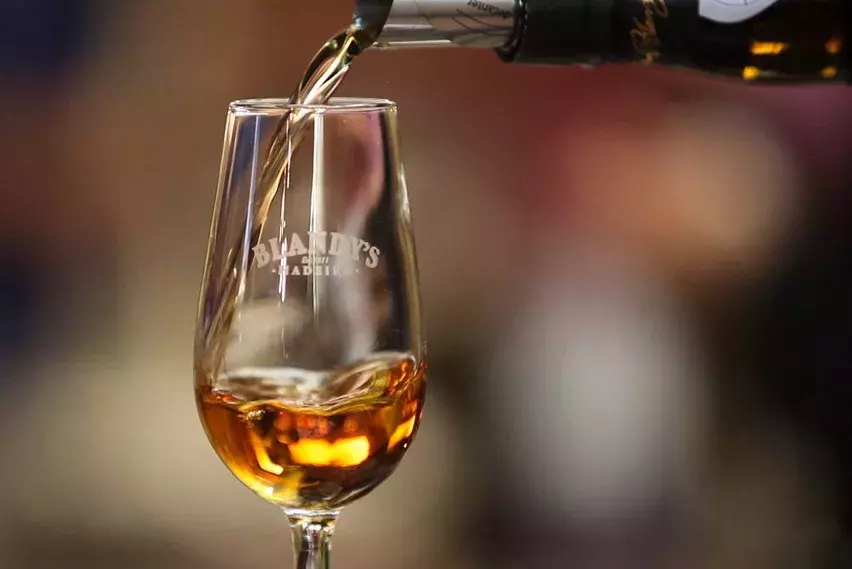
It is worth noting that the smaller the base of the glass, the slower the drink evaporates.
Types of vessels for sherry and port wine
These are wine glasses that are designed specifically for fortified wines, which include sherry and port. The difference from most other sets is the small volume of the bowl. It holds no more than 100 ml of liquid (most often 60 ml).
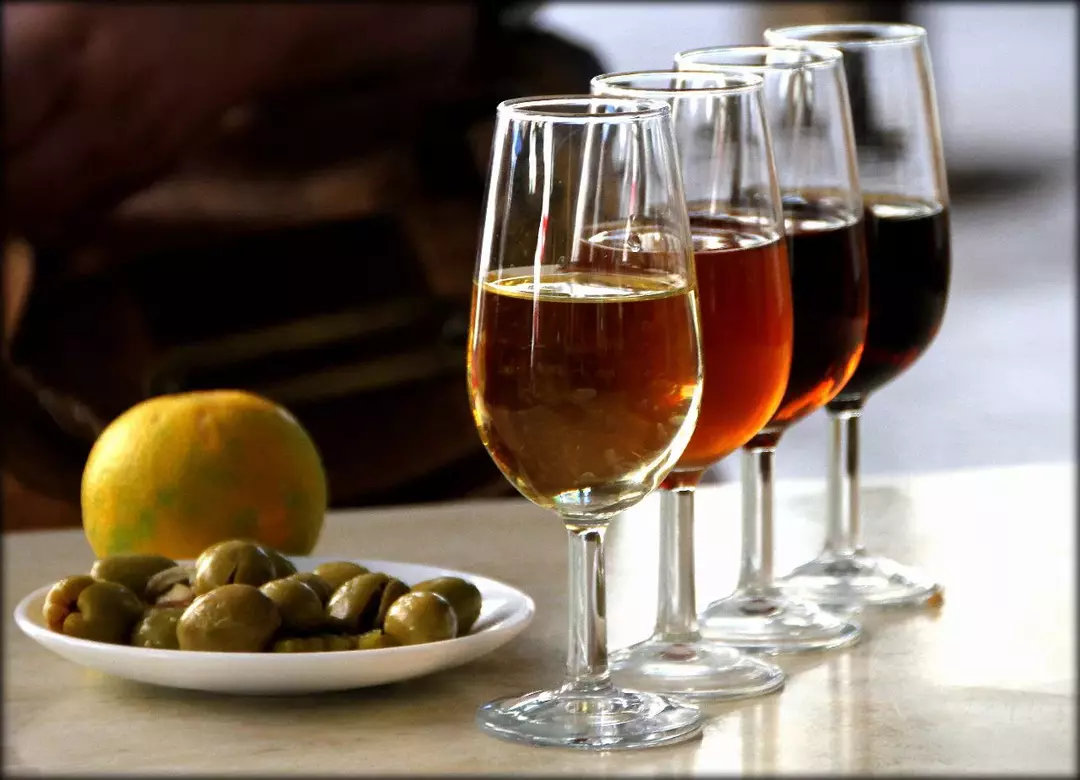
With the right wine glass, you can enjoy it for hours.
The bowl of such glasses is small, with thin walls expanding upwards. It is attached to a small leg with a height of 4 to 5 cm. The conical shape allows you to evaporate excess alcohol, and the leg keeps the heat from the hands. These drinks are served chilled.
Features of the shape of glasses
Distinction of ware consists also in its form. Most models have an elongated narrow leg that protects the walls from direct contact with a person's hand. Since a significant part of the wines are served chilled, it is very important to avoid premature overheating of the liquid.
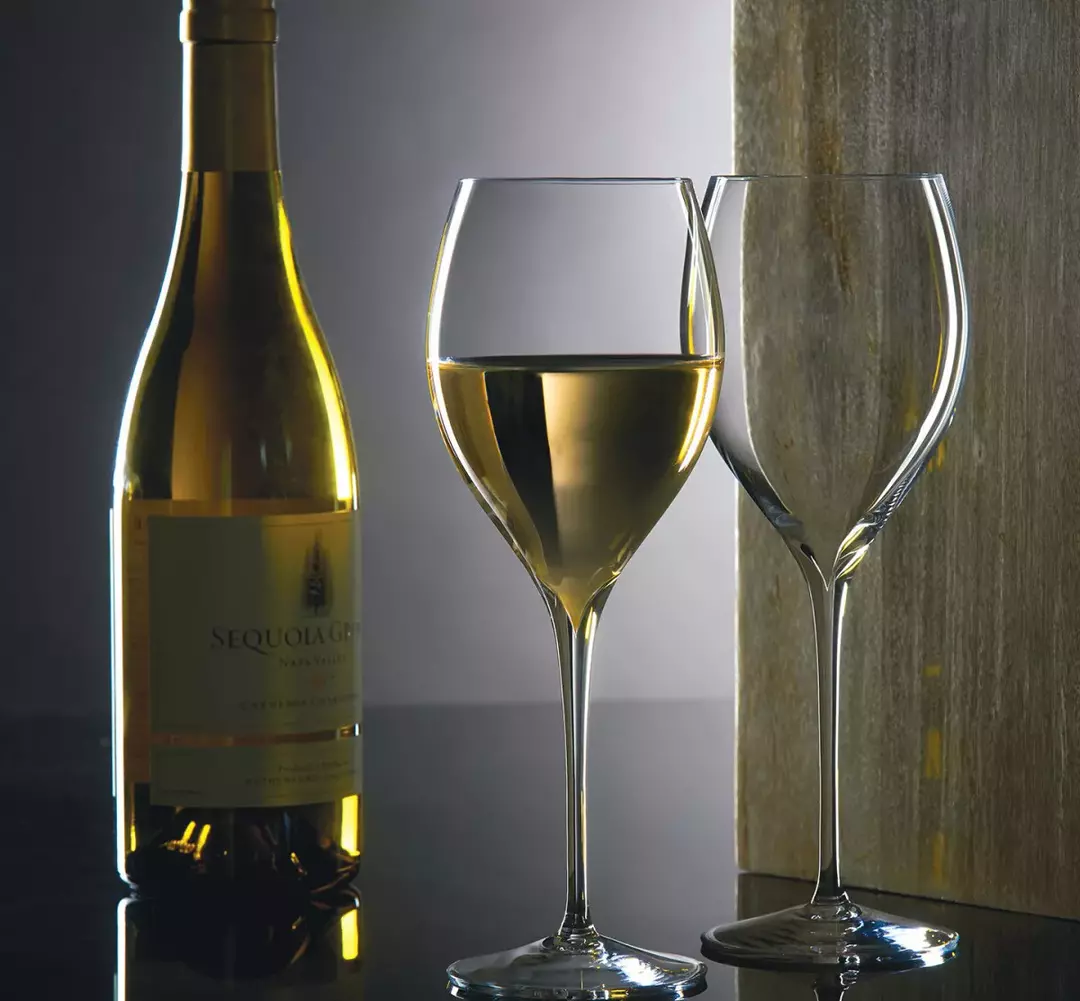
In each model of the vessel, the drink behaves differently.
However, not so long ago, wine glasses without legs (with a flat bottom) also appeared on the market. In most cases, they are used in restaurants and pubs. This is due to the fact that they are more difficult to overturn. Usually Chardonnay or Merlot is served in such vessels. These acidic varieties go straight to the back of the tongue.
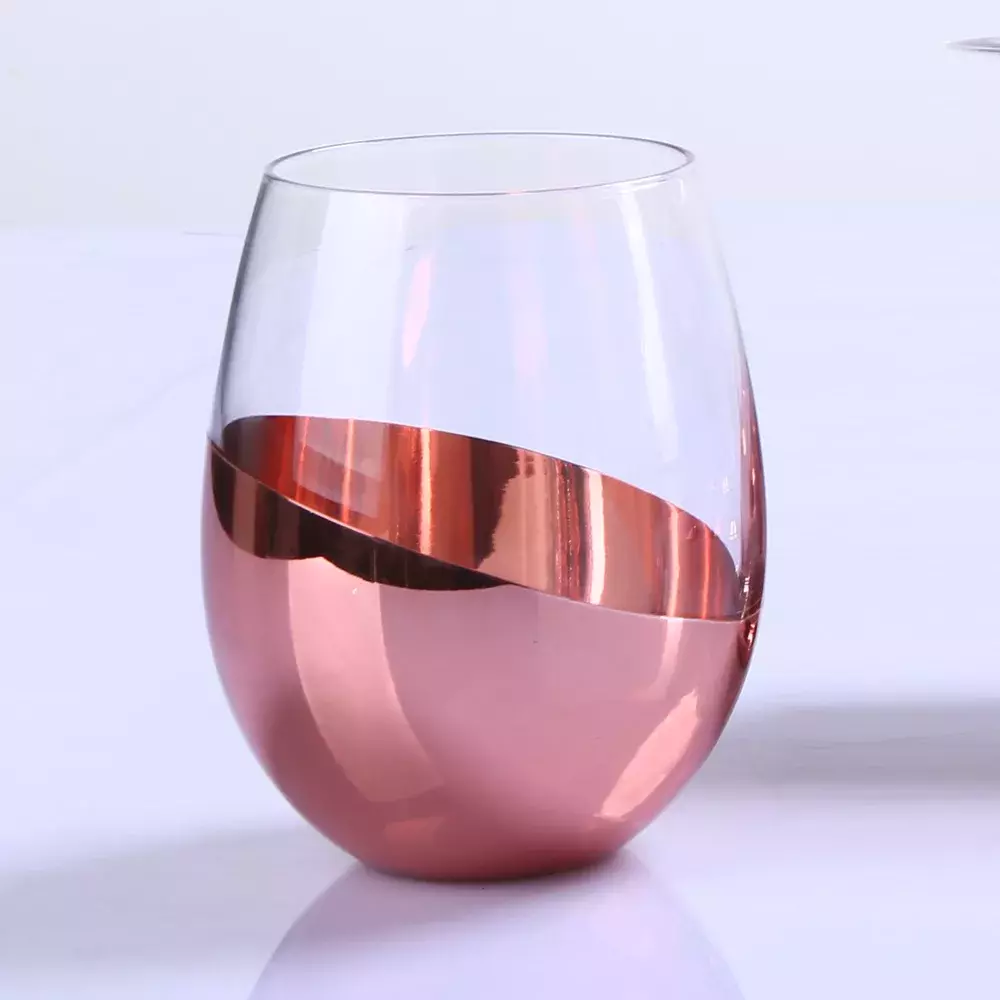
The vessel where it is poured greatly influences the taste or fragrance of wine.
A square glass is another novelty that lovers of non-standard items will appreciate. There are also classic forms:
- Bordeaux (wide bottom, smooth walls);
- burgundy (spherical contour, narrow top).
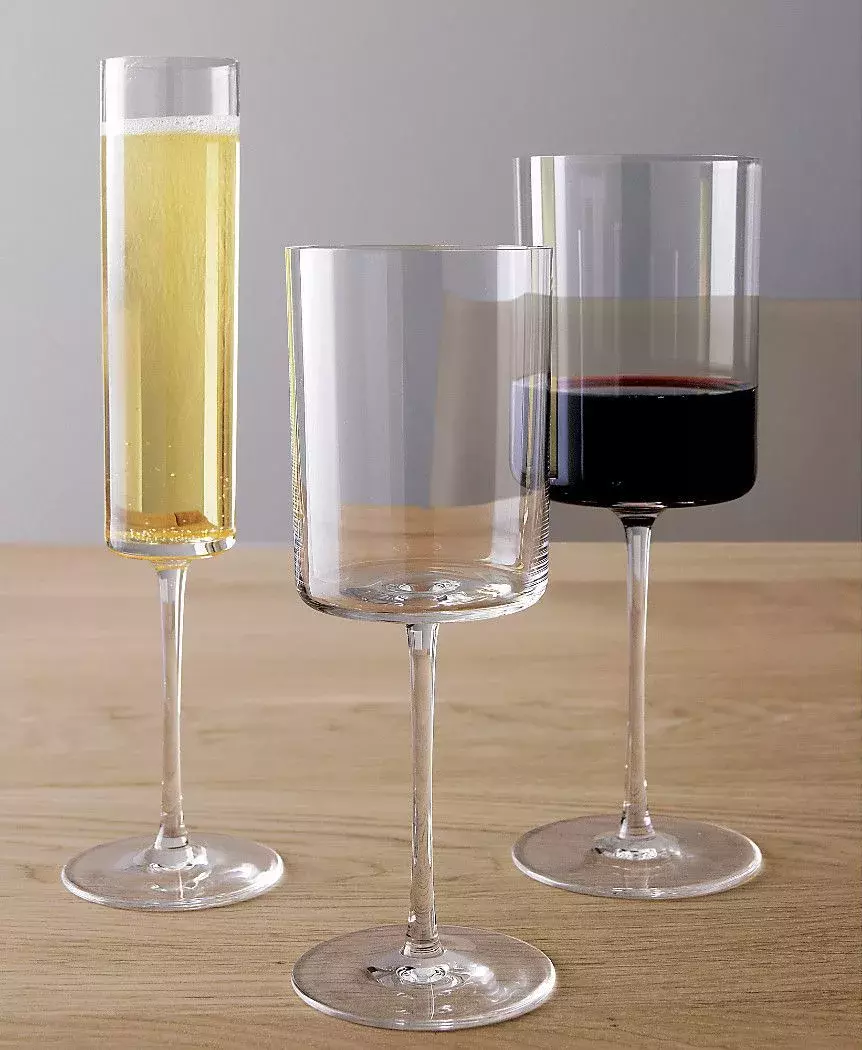
When choosing wine glasses, follow the rule - the approximate price of one unit should be no less than the price of a bottle of wine, which is preferred.
Dimensions and weight
The choice of models is also related to the volume of dishes. For red varieties, bowls are used that can hold 150 - 180 ml of liquid. White varieties require smaller vessels (average 70 - 100 ml). The weight of one glass fluctuates between 100 - 200 g. There are also heavier models of a weighted design (with a wide leg, thick walls).

Good wine needs “space” in order for the taste and aroma to fully develop.
What materials are wine glasses made from?
Most often, manufacturers use ordinary glass. Transparent walls allow you to evaluate the color of the drink. Colored materials are sometimes used, but they are more suitable for inexpensive light wines. Here are the main options for making wine vessels:
- Leaded glass. Transparent material that does not hide the color of the liquid. The only drawback is increased fragility and, as a result, fragility.
- Crystal glass. By production use of lead connections is excluded. Items made from this material are light and durable. But the price is higher than that of models made of glass.
- Crystal. It is rarely used for the production of wine glasses, as it cannot provide the necessary transparency of the walls. Diamond facets distort the color of the liquid.
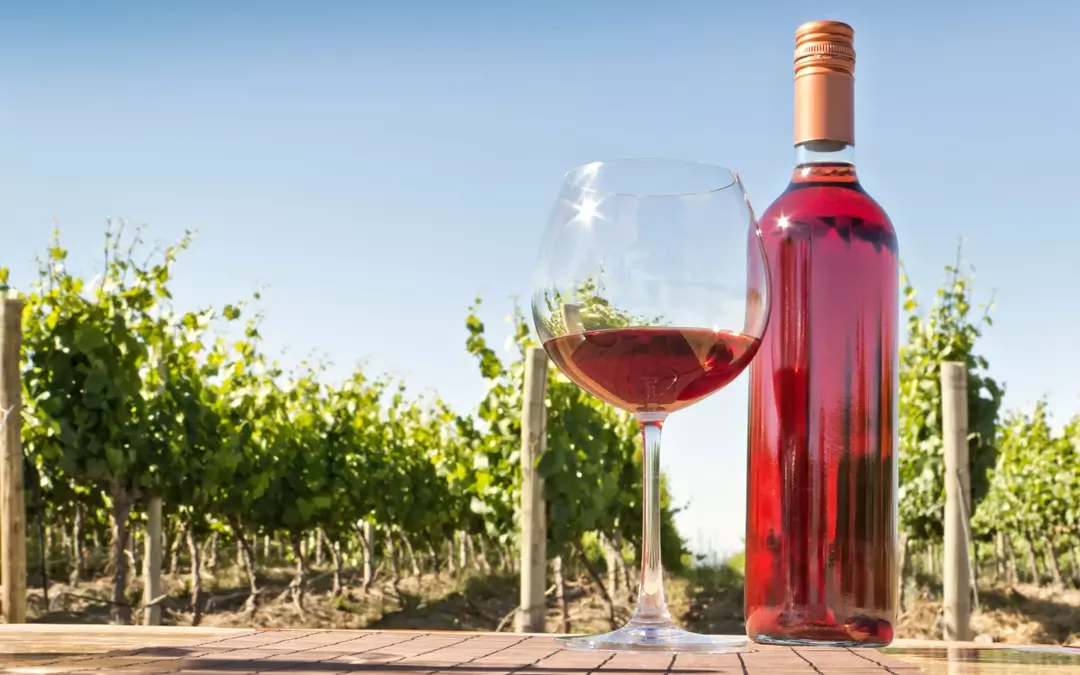
The wine should not be heated so that the flavor bouquet is not disturbed, the cup should not be touched with fingers.
Manufacturer Riedel (developer of the classification) also offers unusual glasses. Black color will not allow you to see what is inside. Such models are intended for "blind tastings", when the sommelier needs to determine the type of wine based on taste and smell.
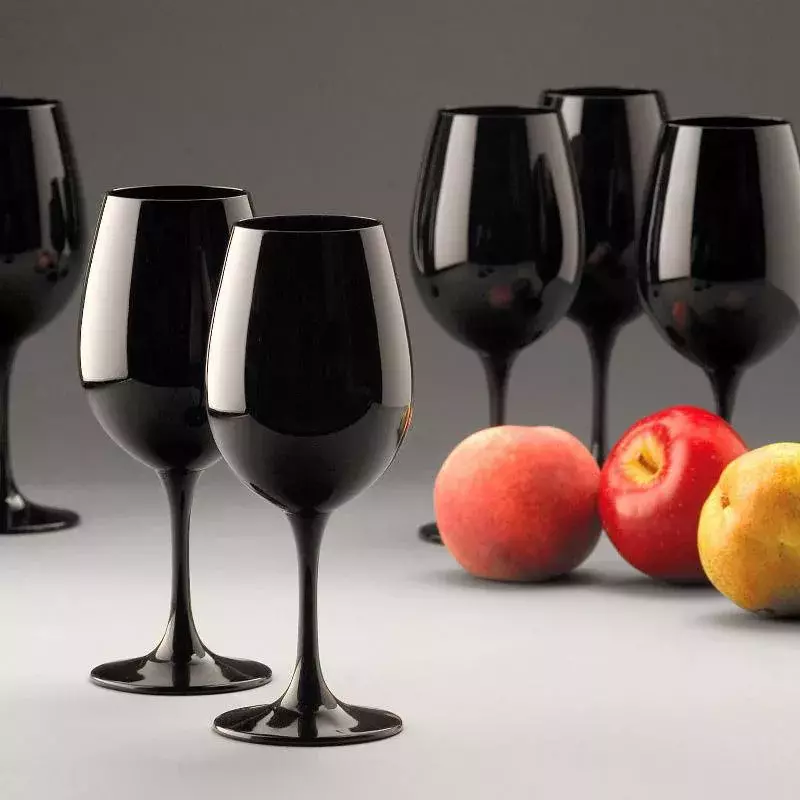
Before the first sip, a circular motion should be made, which will enhance the evaporation and aroma of the drink.
What is the difference between white and red wine glasses
The differences between red and white wine glasses are based on taste. Red varieties are more intense, with a rich aroma and tart taste. Before serving, they do not need to be chilled as much as white ones. When in contact with oxygen, they reveal the taste well, so large bowls are suitable for them. The legs are usually short.
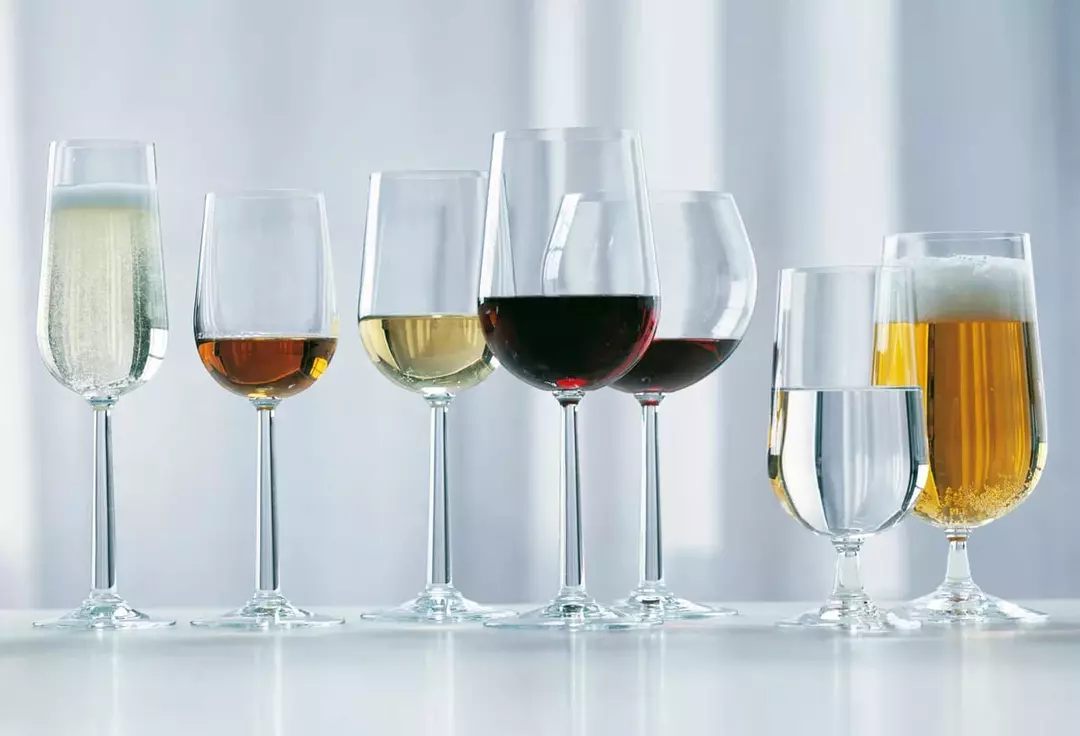
Use only the vessel that matches the selected wine.
As for the white varieties, they are lighter and less concentrated. To fully reveal the taste characteristics, it is necessary to pre-cool the drink. To keep the temperature low, there should be no direct contact between the bowl and the hand. To do this, make high legs. For the same purpose, do not make containers of large volume, otherwise the wine heats up quickly.
How does the shape of the glass affect the taste and smell of wine
Klaus Riedel was the first to understand that the human tongue senses tastes in different regions. Sweet notes are felt at the tip, sour and salty notes on the lateral surface, and bitter notes on the basal area. Depending on the shape of the wine glass, a person will tilt or tilt his head in different ways. And the liquid will fall on a particular area.
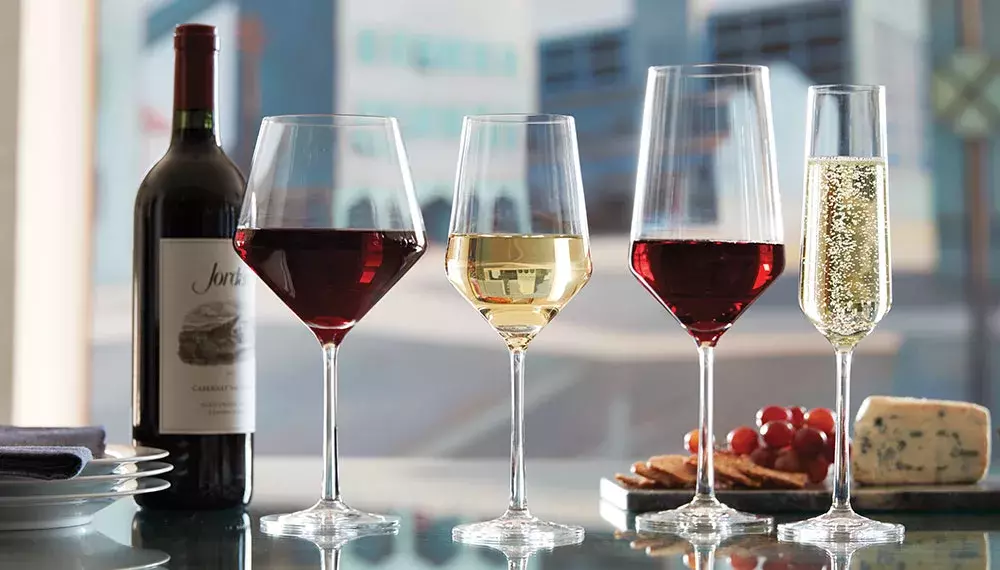
Wine should be poured no more than 150 ml, this will fill the glass with aroma.
Note! The volume of the bowl also matters. If it is wide, then the contact of the drink with oxygen will be higher. Phenolic compounds will quickly turn into esters, which will give a dryish taste. Therefore, the more tart the wine, the larger the vessel should be.
How to choose the right wine glasses
The glass should not only look beautiful, but also meet the basic quality criteria. Here are some basic guidelines for choosing products:
- Crystal glassware is considered ideal. It is transparent and also creates a melodic chime.
- Stained glass, crystal or patterned models will not allow you to appreciate the color. It is better to refuse such products.
- If you drink inexpensive wines more often, then you do not need to purchase Burgundy-shaped vessels. It will only highlight imperfections.
- A set of Bordeaux glasses combines several options, so it is suitable for different drinks.
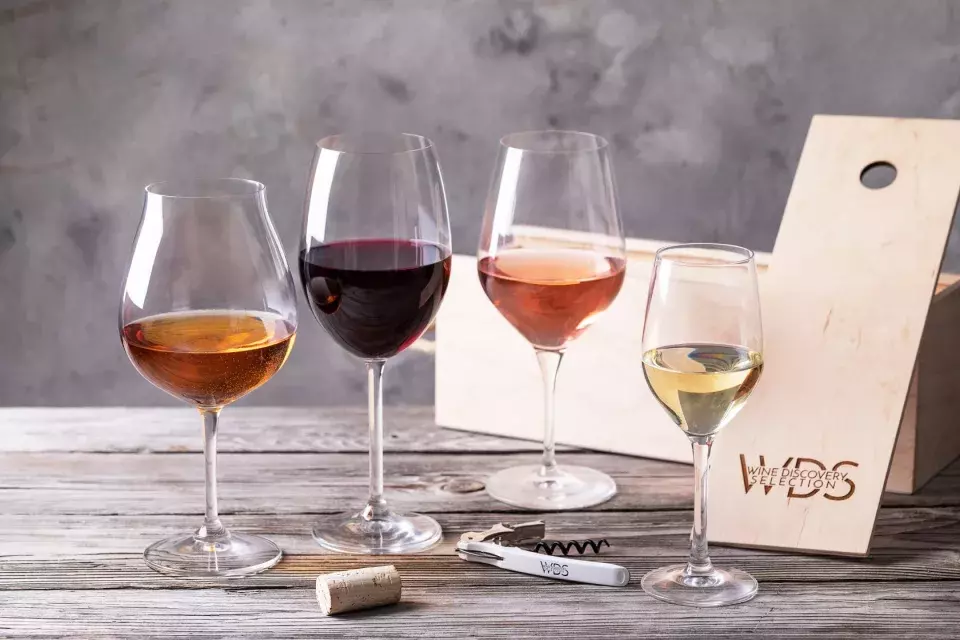
The top layer will take a lighter fruity and floral bouquet, and the middle of the glass will be fragrant with vegetable, spicy and mineral shades.
Subtleties of drinking wine
It is one thing to buy suitable products, another thing is to learn how to drink wine correctly. Keep in mind that each variety has its own cooling temperature. For example, young red varieties are served at 13-15°C, while white dry or pink varieties are served at 7-10°C.
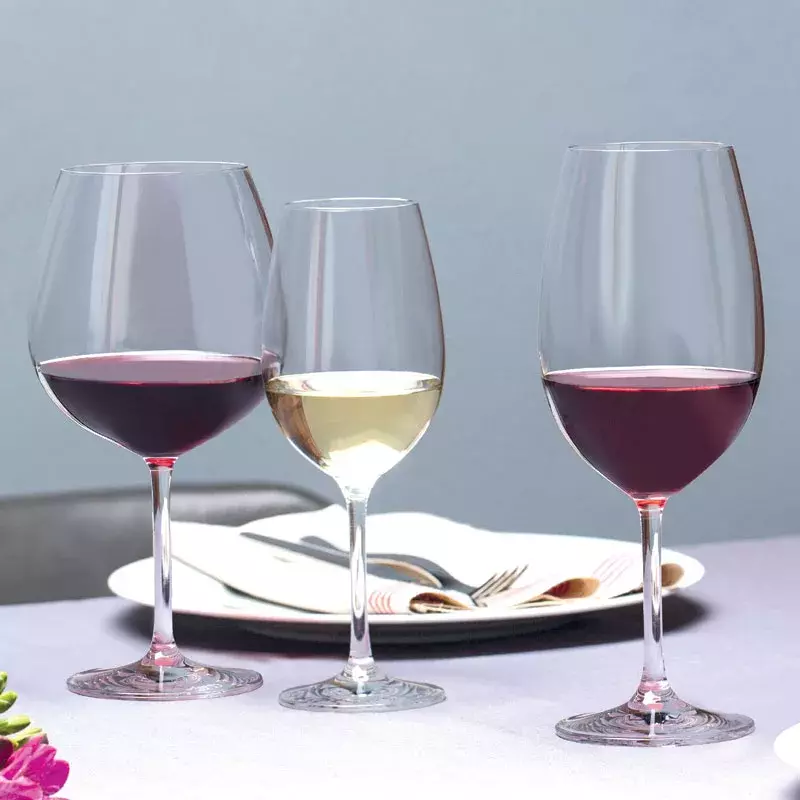
Properly selected rim of the bowl, its diameter will allow the aroma to be well concentrated at the exit.
The tasting begins with an assessment of the color of the drink, after which you can move on to its aroma. Next comes the introduction to taste. As for the snack, there is no consensus on whether it is needed. White bread, hard cheese and grapes do not affect the wine taste characteristics.

The height of the glass has a significant impact on the saturation of the drink with oxygen.
Care and washing of wine glasses
Follow a few simple rules for the care of dishes:
- you can not wash it in hot water (especially when it comes to crystal glass);
- do not use abrasive products to avoid scratching the surface;
- do not leave the wine glasses to dry in the dryer, but wipe them (so that there are no stains);
- do not store products near products with a strong smell, so that the aromas do not soak into the walls and distort the taste of drinks.
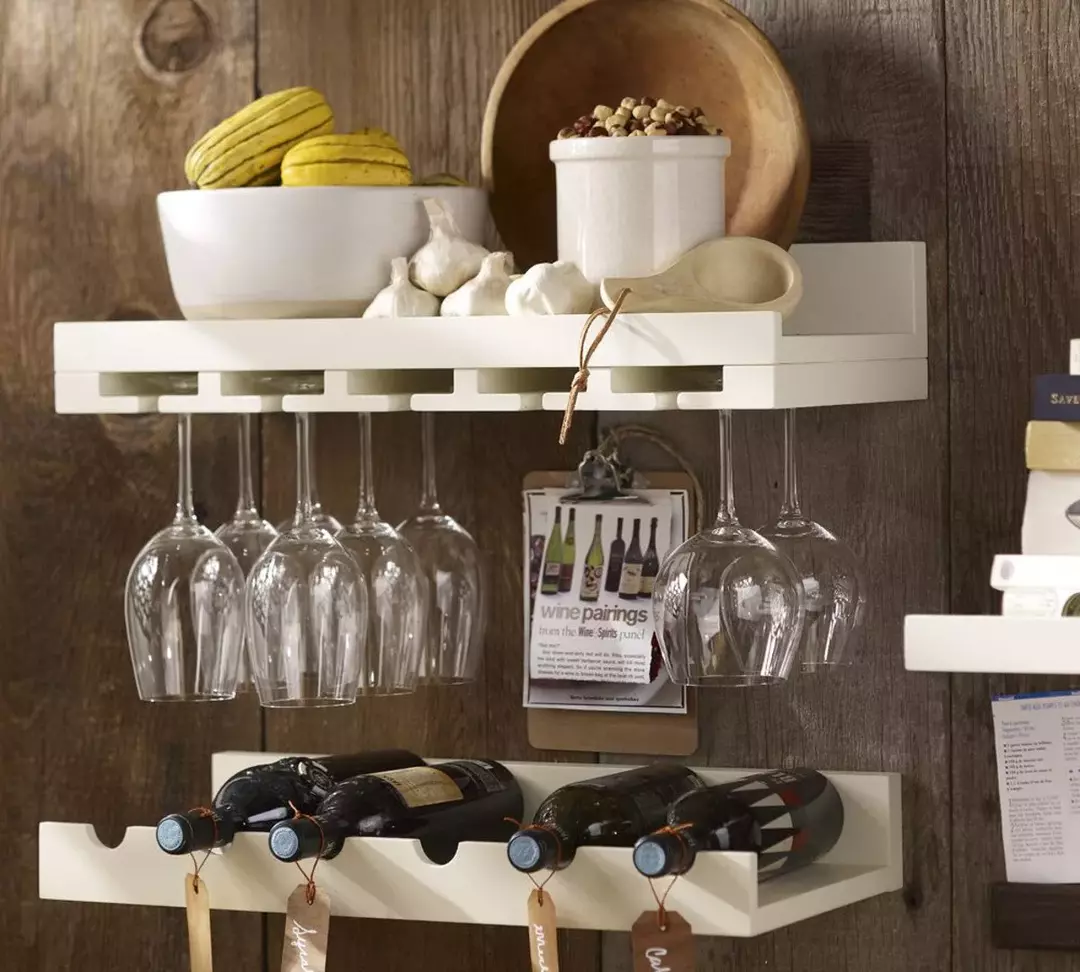
To add shine, glasses can be additionally wiped with alcohol. After it, glassware will look perfectly clean and without streaks.
The best wine glass manufacturers
One of the world's most famous manufacturers is still the legendary Riedel, which began the history of wine glassware. In addition to it, the rating of popular manufacturers is headed by the following companies:
- Chef & Sommelier;
- Stolzle;
- libbey;
- Tognana and others.
Most manufacturers today produce not only single products, but also sets of dishes that are designed for different types of drinks.
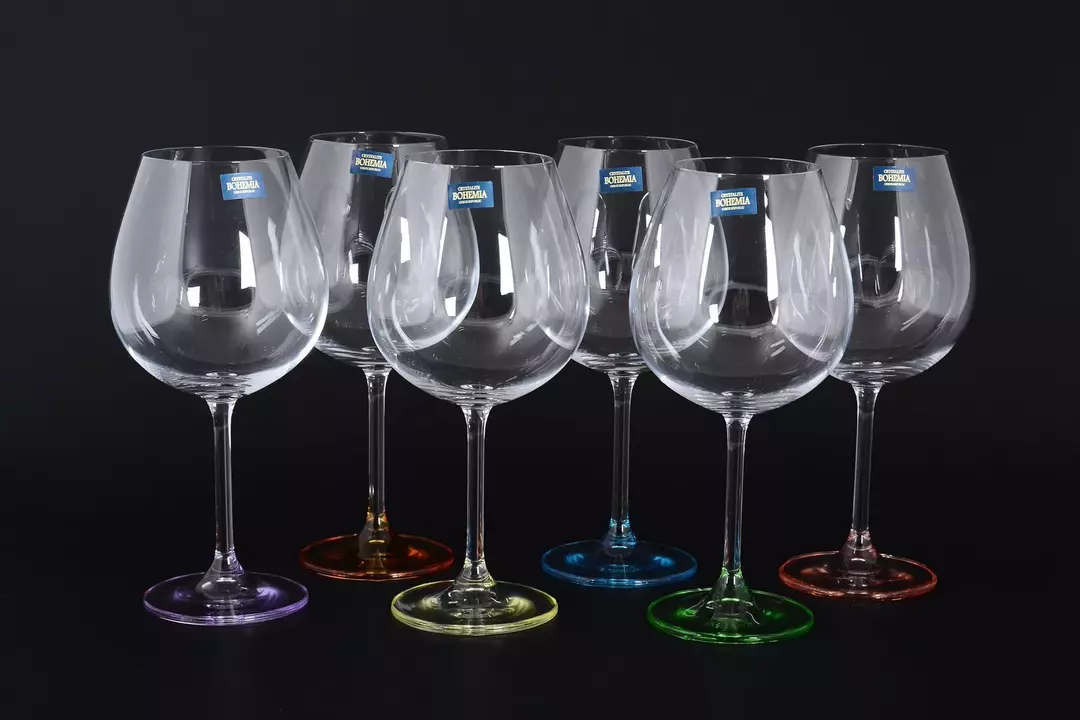
The right wine glasses allow you to fully reveal the secret ingredients of the drink.
It is important to distinguish between wine glasses that are made specifically for white and red varieties, as well as for sparkling wines. The use of vessels for a particular drink will allow you to feel all the richness of taste and aroma. Properly selected dishes will improve the taste of any wine and help it open up.
VIDEO: Master class - the culture of wine consumption.
PreviousDishesFeatures of baking dishes
NextDishesDifferences between a multicooker and a pressure cooker

